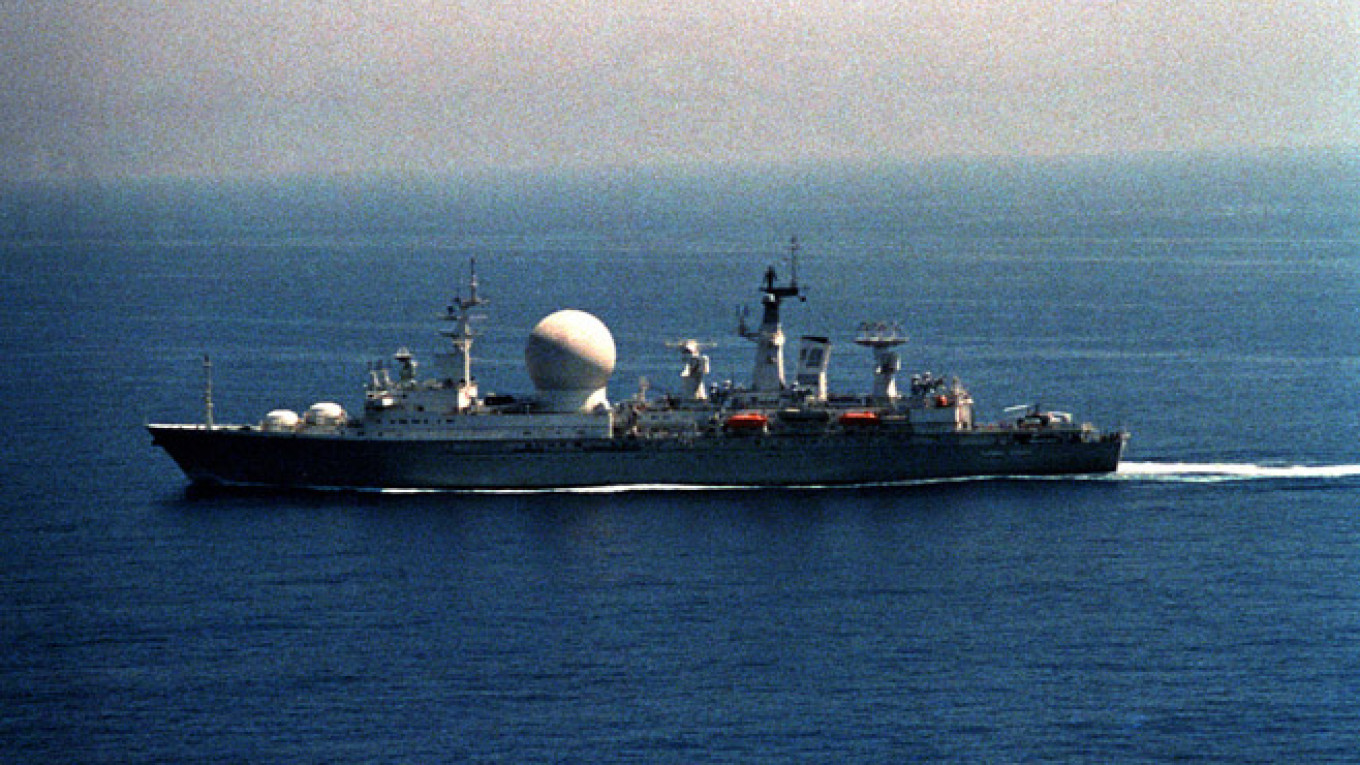The Russian navy has begun modernizing a space tracking ship that will allow Moscow to monitor and communicate with its spacecraft in orbit without relying on U.S. help, news agency RIA Novosti reported Wednesday.
The ship, called the Marshal Krylov, is the last of the Soviet Union’s sprawling tracking fleet, which was dismembered after the communist state's collapse.
Although Russia covers nearly one-eighth of the world's landmass, its ability to communicate with satellites and spacecraft is limited to brief windows when they pass over Russian territory. To communicate with the International Space Station, for example, Russia's space agency depends on the goodwill of NASA, which shares its communication and tracking network.
"Experts are currently focused on the ship's engines. After that, the plan is to replace its on-board systems, galley equipment, navigation and electronic warfare systems, and modernize its communications hardware," a spokesperson of Russia's Pacific Fleet told RIA.
The new systems will enable the ship to track launches from the Vostochny Cosmodrome, which is nearing completion in Russia's Far East, with a first launch slated for the end of next year. Unlike rocket flights from the Baikonur Cosmodrome in Kazakhstan, launches from Vostochny will fly out over the ocean, out of reach of Russia's current tracking ability.
At the height of the Soviet space program in the late 1980s, 12 tracking ships sailed the world over to give the space program a complete, round-the-clock picture of what was happening in orbit.
With the exception of the Krylov, which went into service in 1990, the tracking fleet was scrapped or retired to maritime museums during the painful funding squeeze of the 1990s. In recent years it has served as a simple communications vessel for the navy, though it is sometimes called upon to track ballistic missile tests.
During the early space race, the U.S. achieved total coverage for its space missions by building ground tracking stations on the territories of its allies. The Soviet Union opted to deploy a fleet of specially equipped ships across the world's oceans to achieve the same goal.
NASA eventually abandoned the majority of its ground stations, instead deploying a fleet of relay satellites connected to three main ground stations — one on each U.S. coast and another in Guam.
Such a network is expensive, however, and Russia is preoccupied with other space projects. The only option to begin extending the Russian space tracking network is to bring the Krylov back into service.
A Message from The Moscow Times:
Dear readers,
We are facing unprecedented challenges. Russia's Prosecutor General's Office has designated The Moscow Times as an "undesirable" organization, criminalizing our work and putting our staff at risk of prosecution. This follows our earlier unjust labeling as a "foreign agent."
These actions are direct attempts to silence independent journalism in Russia. The authorities claim our work "discredits the decisions of the Russian leadership." We see things differently: we strive to provide accurate, unbiased reporting on Russia.
We, the journalists of The Moscow Times, refuse to be silenced. But to continue our work, we need your help.
Your support, no matter how small, makes a world of difference. If you can, please support us monthly starting from just $2. It's quick to set up, and every contribution makes a significant impact.
By supporting The Moscow Times, you're defending open, independent journalism in the face of repression. Thank you for standing with us.
Remind me later.


